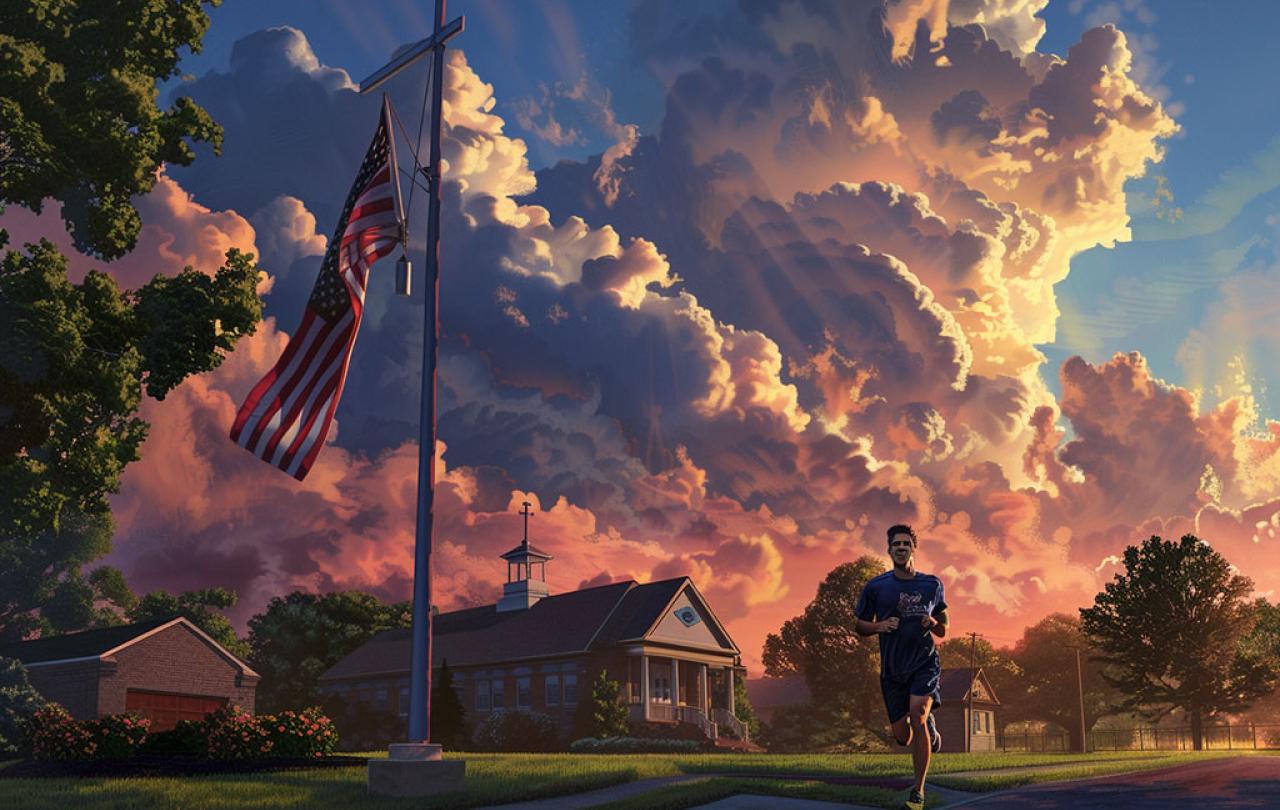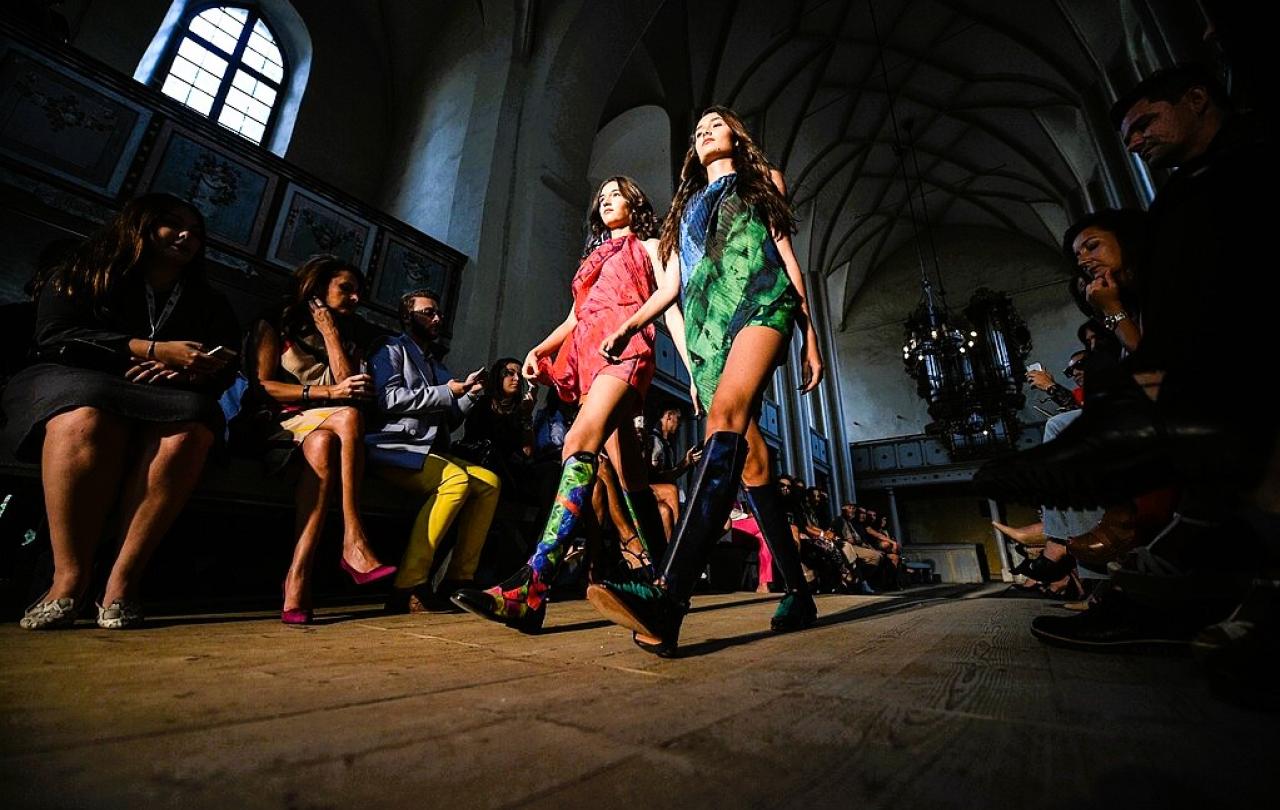
There’s a man. Running. My eyes snap into focus. Time slows - I catch his pace. Then, my eyes start widening. An odd feeling. Being forced into it. Seconds stretched out into minutes. Taking in more, looking for more, looking down that sidewalk, on a street corner in New Jersey.
Before? I was sitting there. In the backseat of my Uber. Winding our way through New Jersey. And I’m sitting there, tired, mindlessly scrolling my phone until that moment. He’s there running.
And I see him. T-shirt. Running shorts. And I’m sitting. And—a nervous flash—he’s running. Why?
And my eyes adjust, widening, scanning, checking detail, and I’m almost seized. My mind shaking itself, coming online, no more automation. My consciousness catches up: “you’re in America,” I tell myself.
Right. I’m not in Scotland. And that man is running. Here in New Jersey. In America. And I’m talking back to myself in this silent car. I’m watching him run. I’m asking why am I slowing this down? And—it flashes—“running from what?”
And I catch up to myself. To what I was trying to say, that people in America run from shooters, too. A wave crashing, sitting in the back of the Uber, and look. Now I’m really looking. Not forced. But naming. There’s other pedestrians passing him, walking. Slowing. On the other side of the street— no fast movement. No screaming. No pops.
I start breathing. I didn’t know I stopped. He’s out jogging. The automated safety check ends. The tranquility of tyranny resumes. I’m sitting in the back of an Uber. I make a note. Be more alert at the train station.
—
People ask me how the relocation back to America has been. And I don’t know what to tell them. There’s a wide gap between the visceral sense of it all pressing in on you, and more common—but also abstract—analysis.
The experience of coming back has been oddly particular. I lived in Scotland for three years, and most of it was spent studying America. From that distance, the broad strokes of American life, the larger trajectories and dangers of our shared political decisions and religious extremism, well, they’re a bit clearer.
But coming back, America presses in on you. And the only way of talking about that, maybe, is specificity. Kerouac was always good at articulating this. His America wasn’t the rise of the military industrial complex in the 50s. It was the road, the gas station on the way from Denver, it was jazz, the dim doorways of San Francisco bars. I’m thinking of Kerouac, but also Langston Hughes. Poets and artists who in their own time, held a mirror up to America, helped us move from the “I” to the “we” as Steinbeck said.
We’re all asking a version of “what’s wrong in America?” (And, do keep asking.) But to ask that question often assumes the broadest strokes, the ones that are most clear from a distance. Which means they are, in one at the same time, the most abstract.
These realities are everywhere, and no where. They are the air we breathe. They appear to the privileged as “logical” and to the powerless as “inevitable.”
Asking after democracy, after the election, and the increasingly nebulous “the church” — I’m convinced that answering “what’s wrong in America?” in the biggest of terms is leading me to (wrongly) believe that responsibility lies among the gargantuan free-floating concepts which we use to narrate our world. As if solving the “crisis of democracy” is a conceptual problem. When in reality, it is concrete, and involves more than coalition building or political activism.
Why more? Because the choices Americans have made over the last 10 years originate from imaginations which limits the scope and scale of what is possible. This is what I mean by “America presses in on you.”
Coming back to America has made this clear. I’m more aware than ever that we can produce good answers and generate compelling analysis about America without ever asking in what way these answers or analysis are sharp enough, concrete enough to puncture the bubbles of social reality in which people choose to live and in some cases are forced to live.
These realities are everywhere, and no where. They are the air we breathe. They appear to the privileged as “logical” and to the powerless as “inevitable.” They press in on us all in their own way.
In some cases, they dull our senses. We say, “as long as our Amazon deliveries continue, as long as the streaming services work.” In some cases, they don’t just press in on us, but press down and perpetuate injustice. As Dietrich Bonhoeffer asked, “where are the responsible ones?”
The visceral shock of return is ongoing. And it hits me in strange ways, on Uber rides and in worship. American life is everywhere and I’m seeing it with different eyes.
Do I care about democratic machinery? Yes. Am I concerned about whether or not the church is, in fact, the church, and not a gear in a partisan machine? Yes. But I’m increasingly convinced that responsible living in the American situation becomes most clear, most evident as we consider the large in terms of the small.
Responsibility emerges with attention paid to the concrete and intimate. January 6 is the subject of my dissertation. But before that, in the months leading up to January 6, I was a pastor just 40 miles from DC. For me, January 6 was a local event. That particularity, that specificity, is a window into a concrete responsibility.
And now, back in this same community, I found myself distracted in a church this weekend. The man in front of me raised his hands in worship, revealing a revolver hanging on his belt. What America is this? But also, what Christianity is this?
The visceral shock of return is ongoing. And it hits me in strange ways, on Uber rides and in worship. American life is everywhere and I’m seeing it with different eyes. And I wonder what it will take to break the spell of our most cherished illusions, of a certain type of freedom — one that tells us it is Christian to raise our hand in surrender to a god who we say is loving enough to save the world, but seemingly not strong enough to deliver us from our evil.
In the end, perhaps it’s best to say that it’s been proof of a good ruining. After all, we’ve experienced nothing short of a conversion, a move closer towards peace, towards hope, that unsettles all our strategies of security and comfort underwritten by violence and oppression. This is the kingdom of Heaven. Something Jesus announced that continues to unsettle and disrupt the likes of T.S. Eliot who put it well in Journey of the Magi:
We returned to our places, these
Kingdoms,
But no longer at ease here, in the old
dispensation,
With an alien people clutching their gods
I should be glad of another death.





